The City of Chicago has announced a new program which seeks to revitalize the aging LaSalle Street corridor in The Loop. Dubbed LaSalle Street Reimagined, the program launched this week with an Invitation For Proposals (IFP) by the Department of Planning and Development as well as the Department of Housing. The boundary of the area for projects will be W Washington Street to the north, W Van Buren Street to the south, N Wells street to the west, and mainly N Clark Street to the east, encompassing much of the once bustling financial district.

Map of LaSalle Street Reimagined and of the street during an activation via City of Chicago
Once easily recognizable as the Wall Street of Chicago with the towering Board of Trade building at its end, the pandemic and tenant needs for modern spaces have left a large amount of vacancies on the road. Bank of America is one of the most recent ones leaving their tower at 135 S LaSalle Street for the recently completed 110 N Wacker tower, and the Board of Trade converting part of what was once one of the world’s largest trading floors into a ComEd substation. But new hope is on the horizon with Google purchasing the Thompson Center at the northern end of the strip, sparking a hope for new demand.
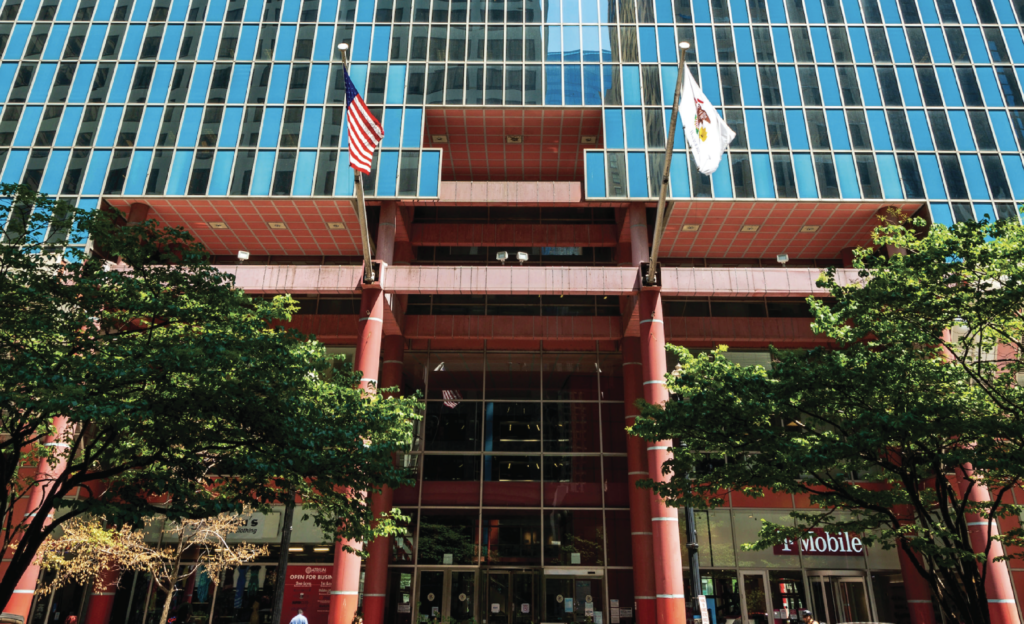
Exterior view of the Thompson Center via City of Chicago
That demand is what the program aims to foster but providing financial incentives for the residential conversion of structures within its boundaries. This money comes from the largely untapped LaSalle Central Tax Increment Financing (TIF) district, which currently contains $196 million to be used up by LaSalle Street Reimagined. It in itself was developed in collaboration with AECOM, Koo LLC, Johnson Research Group, Gensler, Applied Real Estate Analysis, and URBAN ReSOLVE, along with the input of current businesses on the street. Stakeholder engagement is set to continue for the next two to five years and thus the city is encouraging potential developers to have their own negotiations with property owners.
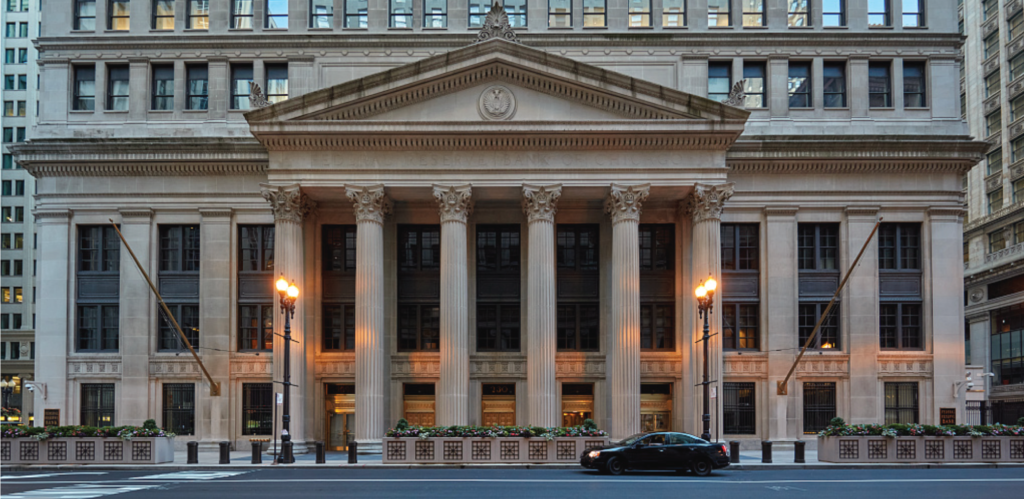
Exterior view of the Federal Reserve Building via Library of Congress
Although all buildings are up for grabs, special consideration will be given to those with high retail and office vacancies, with landmark designations, or for the 19 edifices that are orange and red rated. Those who respond to the IFP must also provide a Purchase and Sale Agreement for the subject property, along with plans to accommodate commercial tenants who plan to stay or to relocate them elsewhere downtown to foster a mixed-use area that is often seen as a nine-to-five neighborhood. Sustainability, preservation, improved infrastructure, affordability, and connection to the public realm are all the core values of the program.
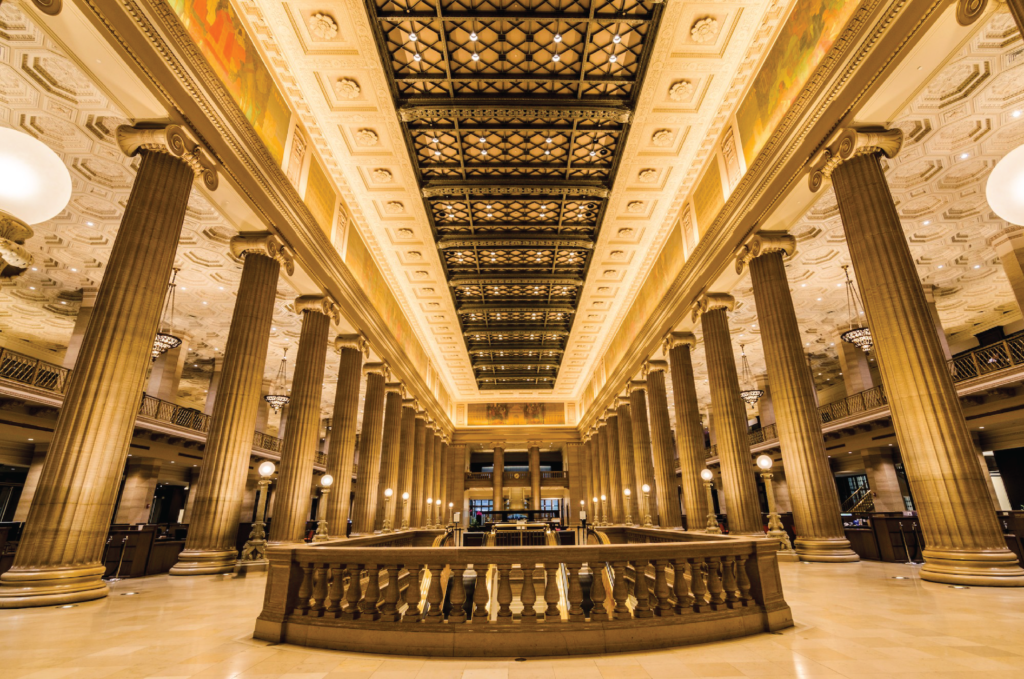
View of Wintrust Building’s banking hall via Openhouse Chicago
Prior to fully submitting for the IFP, potential developers will need to present their plans to the Alderman and incorporate any relevant feedback before the selection process. One of the main aspects that is being required is that 30 percent of the proposed units must be affordable, adding to an area that currently contains none. These must be offered to those making 60 percent of the Area Median Income (AMI), of which one-third must be for those making 50 percent AMI, and one-sixth for those making at or below 40 percent AMI. These will also need to be comparable to the market rate units in size and finishes, all must be accessible, and must remain affordable for at least 30 years.
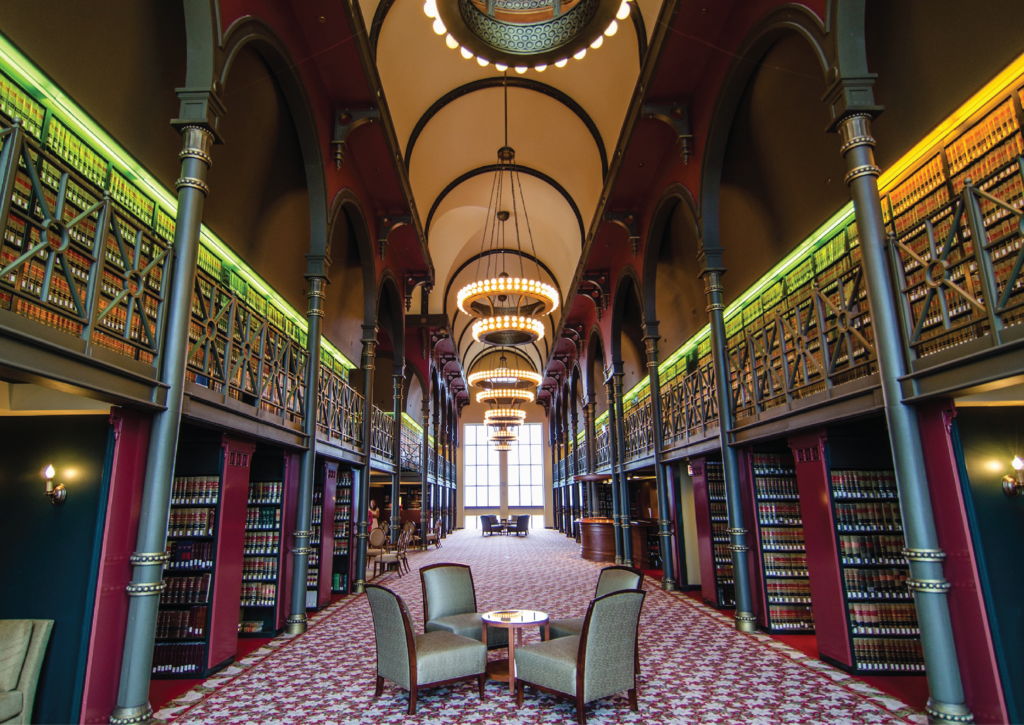
Interior view 190 S LaSalle Street via Openhouse Chicago
The IFP also prioritizes the re-use of unique and major architectural features like banking floors or lobbies, encouraging them to become grocery stores, cultural attractions, restaurants, or other similar uses. All proposals must also follow other city requirements including minority hiring, and if receiving funds from other preservation or low-income housing sources must comply to whichever provides the stricter code. The money can also be used for infrastructure improvements like new plazas, bike lanes, landscaping and such, which has been a point of contention since its announcement seeing other TIF district disputes such as Hudson Yards in New York.
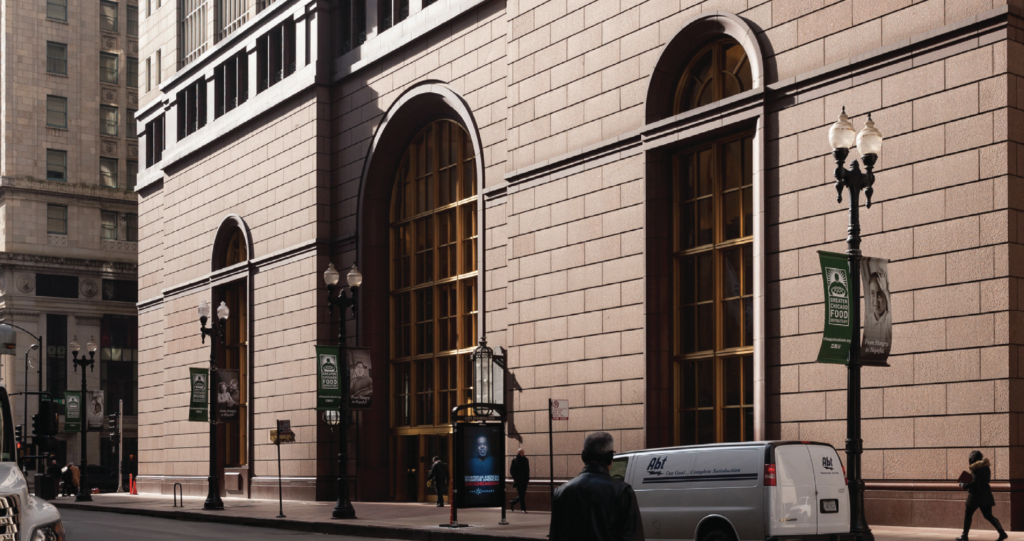
Exterior view 190 S LaSalle Street via City of Chicago
The deadline for submissions is December 23, 2022 with initial informative meetings being held mid October. Decisions will most likely be made by next year as the city has been studying different approaches at revitalizing the corridor which suffers from 25 percent of office vacancy, 36 percent of retail vacancy, and foreclosures including the JW Marriott hotel. Various property owners are already in talks with the city to participate in the initiative, although the city will retain no ownership of any of the projects, other incentives will also be available as needed including federal, state, and county as necessary. Chicago YIMBY will continue to report on the proposals as they are made public.
Subscribe to YIMBY’s daily e-mail
Follow YIMBYgram for real-time photo updates
Like YIMBY on Facebook
Follow YIMBY’s Twitter for the latest in YIMBYnews

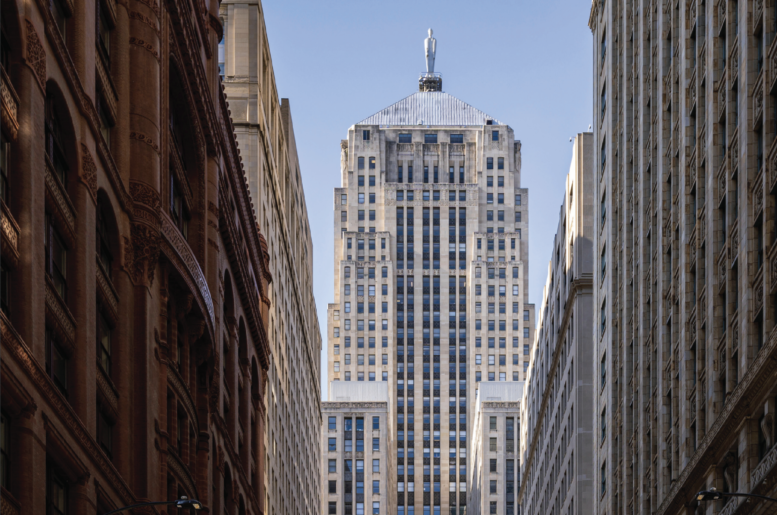
Sounds like a great idea tbh. Would love a gallery cafe in a banking hall or stopping at an urban former grocery near the rookery. Right now the area is a gorgeous, silent museum. Will lightfoot’s signature downtown project be a new LaSalle corridor?
Ban cars and convert the street into a giant pedestrian plaza. It will instantly be the most attractive and visited area of the city.
Is the Federal Reserve really up for development? Does not the Federal gov own that and keep a bunch of gold there? I would like a condo that looks out on the gold, so shiny.
I worked at 231 LaSalle in the early 90s and the area truly was bustling with people until late in the evening. Sad the the area is now void of much of the vibrancy that once existed. Hopefully this transformation will be successful and become the ‘bedroom community’ for those working in other parts of the Loop and West Loop.
Could be awesome but needs some green space. Turn Lasalle into a linear park?
This is a much needed investment in the heart of the loop. With Google coming, hopefully, a lot of these buildings can get filled up with some of the office space while adding much needed rentals to the area. Hopefully, 1,000 conversions is just the start. Like Little T said, this area used to be bustling with people. In 5 to 10 years from now it would be nice to see that once again, but with more of a 24/7 vibe to it. This is truly an iconic corridor that will hopefully start making some noise. I would love to see a couple underutilized buildings turn into supertalls with more high tech companies coming in. Hopefully, Lincoln Yards can have life sciences, Fulton Market continually build newer and exciting industries and the 78 have it’s own life sciences/UIC area. All could be independent from each other and support each other while having residents/retail/experience in each corridor with the live/work/play lifestyle.
Like NYC has Midtown, Downtown, Hudson Yards, Downtown Brooklyn Etc., we are now in the early stages of having no more centralized loop/CBD. Lincoln Yards and south of there, Fulton Market/West Loop/, South Loop/78, The Loop/River North/Streeterville can all hold office space and residents with skyscrapers. People in NYC travel by subway within all of these districts in New York. We can have the same experiences here soon. Orange line to the 78, Green/Pink line to Fulton Market, Brown/red/purple not too far form the 78 and the Loop having all of the lines. It would be amazing to have more subway/L lines one day too.
The problem is that you dream bigger than our city leaders and developers. They always talk the good game about Chicago being a global leader and innovator with the sky being the limit. There’s the customary recognition that we are the architectural capital then they espouse the most small-minded, Midwestern small-town vision one could imagine.
During the press conference they were talking about independent local retailers lining LaSalle like dry-cleaners, salons, grocers, coffee shops, shoe-shiners etc. and having a ‘Sundays-on-State’ type of vibe. Providing homes for low-level workers in the area to have access to what is a lavish pre-war skyscraper canyon is pretty ridiculous. With Google coming the market will correct for the vacancy without interference just like Fulton Market. The city stifled potential there with all the designs guidelines, dictating land-uses, materials etc. For years there was a ban on residential north of Lake as well. Now we see explosive growth after it was lifted. This is the sort of micro-managing that is plaguing growth.
They should be focused on building a world-class pedestrian street with international appeal. High-end shopping, hotels, restaurants, clubs, bars, theatres and the like with interactive lights, landscaping, sculptures and perhaps finally allow digital advertising to get with modern times. Chicago trying to be so refined leads to sterility. NY & London allow for signage and lighting on classic architecture. L.A., Miami, Vegas, Toronto, Tokyo and many more have all embraced a Times Square type aesthetic. It does create vibrancy, feels international and draws crowds. We act as if it is purely tacky and beneath us.
Another problem is they aren’t building a CTA line out to Lincoln Yards and there was supposed to be an underground Red-Line station at 15th & Clark for The 78 but it has obviously either been scrapped or pushed back years if it ever gets built. Chicago is losing ground to competitors that have much greater ambitions for what constitutes being a global hub and more significant public works projects. `
The lack of dreaming big for CTA expansion isn’t a Chicago problem as much as it is a Federal Government problem. The Federal Government sucks the majority of our tax dollars and then doles it out as it sees fit (disproportionally benefiting low tax growth states). And so it continues to invest much more heavily in highway infrastructure for private use, and it leaves the scraps for public transportation. Even last year’s infrastructure bill only provided a few extra drops of funding for public transportation, sadly.
“One of the main aspects that is being required is that 30 percent of the proposed units must be affordable, adding to an area that currently contains none.”
Does this mean Section 8 housing for LaSalle Street? WCGW
Hi Earl,
I do not believe this is meant to be section 8, it will be similar to the affordable housing required from projects over 12-units city wide. Meaning those making at or under 60, 40, or lower percents of the AMI will be offered a lower rent price.
Thanks for reading!